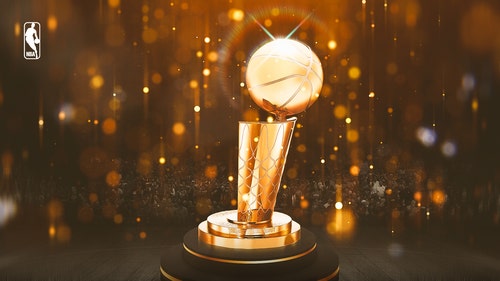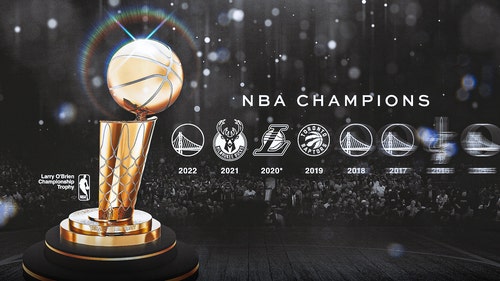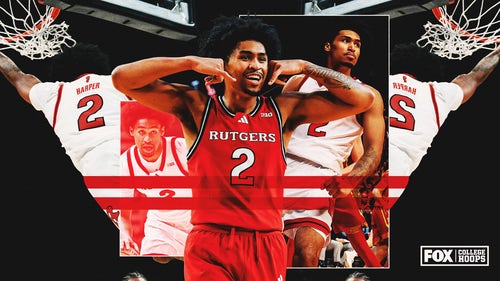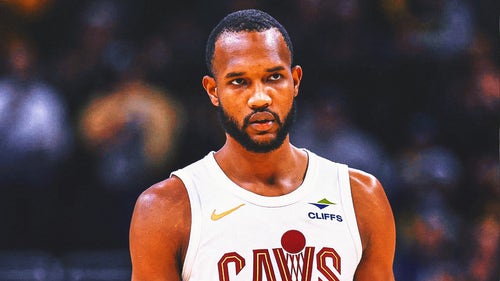
India starting to tap into hoops talent
Troy Justice, 44, arrived in India last February for a little game of one-on-one ... point-two billion. Justice, the NBA’s director of operations in India, is the league’s lone man on the ground in the world’s second-most populous nation.
“They have a saying here,” Justice says, “The guest is king.”
Justice may be royalty, but basketball is little more than a rumor in India. Although 4.5 million Indians play, that translates to less than one half of one percent. Mumbai, the second-largest city in the world, has but one indoor court. And that is located at the American Embassy School.
“What’s needed is things that are fixable,” Justice says. “Coaching. Strength training. Infrastructure. But to be honest, there’s a long way to go.”
Enter the mogul.
“I have two acceptable numbers,” says Ted Forstmann, the billionaire CEO of International Management Group. “Big and zero.”
Four years ago, IMG was contacted by the Board of Control for Cricket in India. The cricket federation sought IMG’s aid in launching a domestic professional association, the Indian Premier League (IPL).
“We wanted 10 percent ownership,” says Forstmann, 70. “Sold the TV rights for $1.6 billion. Huge success. But before a ball had been hit, they reneged.”
Graft and corruption are rampant in India. After IMG agreed to a smaller percentage, the board again reneged.
Finally, an IMG representative in Mumbai asked his boss what the fairest possible deal might be in the next round of negotiations.
“The fairest possible deal,” said Forstmann, who built his empire on brokering deals, “is ‘shove it.’”
Hence, when Forstmann saw the opportunity two years ago to “take over sports in India,” he first forged an alliance with the wealthiest man in the country, Reliance Corp. CEO Mukesh Ambani. Within a year, their partnership, IMG-Reliance, had purchased all the commercial rights to basketball (for 30 years) and soccer (15 years) in India.
And if you believe the caste system still exists, even the Brahmins bow to Ambani.
“I’m a flea riding on the back of an elephant,” says Forstmann of his power-play partnership. “This time the flea knows where it’s going.”
HE KEPT GROWING
Satnam Singh Bhamara is 15 years old and 7-feet tall. His father, Balvir, is 7-foot-3. His grandmother stood 6-foot-9.
“When I was a child they looked at my size,” says Satnam, referring to his boyhood in the northern Indian state of Punjab, “and told me I’d be useless when I grew up.”
If only they knew how far up he would grow.
Satnam and 28 other Indian adolescents, including the entire under-15 national boys soccer team, enrolled at the IMG Academies in Bradenton, Fla., last September. All are on full scholarship at a cost to IMG of roughly $100,000 per student per year. None, however, has quite the potential in return on investment of Satnam, who was discovered by Justice last March.
“Satnam ... he is ... he wasn’t planned,” says Sam Zussman, Managing Director at the IMG Academies. “But he is probably the Neil Armstrong, he now represents more than himself.”
Not that anyone with a size-22 foot would ever take one small step, or leave a tiny footprint. Satnam has an opportunity to go where no one from his country has gone before.
“Whatever I will be,” says Satnam, who speaks Punjabi and is conversing through an interpreter, “is because of basketball.”
Imagine if Satnam were to some day play in the NBA. Imagine how the world’s largest democracy, its second-most populous nation after China and one with a burgeoning middle class, might respond. Imagine the windfall that both the NBA and IMG might reap.
Big. Or zero?
About that number. Zero first appeared in written form in India. It is also the number of Indians who have been on a major American professional sports roster.
“It is the definition of an untapped resource,” says Andy Borman, the Director of Basketball Operations at IMG. “Beyond cricket, they don’t have a past, they don’t even have a present.”
India, a nation four times the size of the United States in terms of population, has no sports lineage outside of cricket. India has won just one Olympic gold medal, in shooting, and has never sent a squad to soccer’s World Cup. The national team is currently ranked 144th by FIFA, and even an internal IMG memo reads, “(The ranking) only improves when they don’t play.”
Basketball? Only once has it sent a team to the Olympics, and that was in the boycott-ravaged year of 1980 in Moscow. India finished last in that tournament, going 0-8 and losing by an average score of 116-66.
Last November, for the first time, India won a contest, albeit a preliminary qualifier, in the Asian Games. It was a come-from-behind victory against war-ravaged Afghanistan.
And yet more than one-seventh of the earth’s people live in India. Untapped resources? India is the very definition of human resources. Then again, having access to the Pacific Ocean doesn’t mean you have an endless supply of potable water.
Forstmann disagrees.
“You’d have to be retarded, in terms of imagination, to not see the potential in India,” he says. As Forstmann speaks, a blizzard swirls outside his 45th-floor corner office overlooking Central Park. The wind is such that snowflakes blow haphazardly, creating a snowglobe effect.
The effect is surreal, but then again so is Forstmann. A son of Brooklyn, Forstmann is a self-made billionaire and lifelong bachelor. His current girlfriend, Indian stunner Padma Lakshmi, is the host of “Top Chef.”
“I’ve met five million cousins of Padma’s, and every one of them is a professional something,” Forstmann says. “Very educated. But there’s nothing to do in India. That’s why Bollywood is so big.”
Sports, Forstmann anticipates, will fill that void. The first goal is to qualify a soccer squad for the 2022 World Cup in Qatar. The first step for basketball, however, is to create infrastructure at the grass-roots level, something that both IMG and the NBA are doing independent of one another: leagues, tournaments, coaching clinics.
By hosting tournaments and conducting clinics, the NBA hopes to foster an interest in basketball and, hence, the league. By cornering the market on both basketball and soccer, IMG hopes to cultivate domestic professional leagues as well as sports academies such as the one in Bradenton. And, were Satnam ever to turn pro, IMG’s roots are in athlete representation.
Still, Zussman is asked, if India has never had an abiding interest in sports outside of cricket, what makes IMG think that they can stoke this fire?
Zussman, who spent four years in the Israeli Defense Forces, contemplates the question. “Don’t quote me on the long pause,” he says with a smile.
“Two things,” he answers at last. “One, I see an awakening there. Two, the collision of large numbers (of people) and infrastructure. You put these two together, and even if you try not to, you’re going to have evolution.”
Infrastructure is the kindling. What is the spark?
“Aspiration,” Zussman says. “You need to give youngsters, and 50 percent of India’s population is under the age of 25, something to aspire to. That’s the role of Satnam.”
FINDING THE GEM
Mark Twain, who visited India, called it “the most extraordinary country that the sun visits on his rounds.” Troy Justice, a latter-day Innocent Abroad, says, “In India you see something every day that you’ve never seen before.”
One month after touching down in New Delhi last winter, Justice boarded a train bound for the city of Ludhiana in the northern region of Punjab. When he disembarked four hours later, Justice was met by a most unusual greeting line. The coach at the Ludhiana Basketball Academy had lined up his players in order of descending height.
“I’m looking down the line,” says Justice, “and it’s 6-10, 6-8, 6-7, 6-6, 6-6. Teenagers.”
At the front of the queue, extending a bouquet of flowers toward Justice, stood Satnam. Justice, who had no idea until that moment of Satnam’s existence, stared in bewilderment. “I think,” he told the team’s coach, “that I’m just going to move to Punjab.”
The first thing Justice noticed about Satnam, besides his height, were his broad shoulders and generally mature frame. The second thing was his feet.
“His shoes were falling apart,” Justice says. “He wore a running shoe that a local cobbler had patched together. I called back to New York that day and told them, ‘We have to get this kid some shoes.' They sent two pairs of size 22s immediately.”
Satnam hails from Ballo Ke, a farming village of about 5,000 residents. While he is the tallest figure in Indian sports, he is not in his own home.
“My father could have been a very good basketball player himself and he wanted to play,” Satnam says. “But his father (who stood 6-foot-9) asked, ‘Who will tend the fields?”
When Satnam was 10 and already 5-foot-11, his father enrolled him in a basketball academy. That eventually led to his encounter with Justice last March.
That same month, Forstmann and Ambani formally announced the IMG-Reliance alliance. Three months later, in June, IMG-Reliance purchased all commercial rights to basketball in India through the year 2040. One month later, in late July, Andy Borman and an assistant, Dan Bardo, staged a three-day tryout in New Delhi for eight available scholarships (four boys, four girls) to the IMG Academies.
“We had a gym, but there was no air conditioning,” recalls Borman, a former walk-on basketball player and varsity lacrosse player at Duke. “It was 99 degrees outside and the floor was concrete. But we had 28 boys and 28 girls who had come with a parent, some on nine-hour train rides."
Borman noticed Satnam immediately.
“The first thing I wanted was to see him run,” Borman says. “I thought, doable. Then I wanted to see him with the ball. Very doable.”
Six weeks later, Satnam and seven other basketball players, four of them girls, made the pilgrimage from New Delhi to Bradenton to embark on their new lives. They are as fascinated by the local Wal-Mart as Westerners might be to the Taj Mahal, taking field trips there just to walk up and down the aisles and gape at the surfeit of available goods.
“In Satnam’s village, the largest store is this size,” says his interpreter, Rajesh Nanduri, circumscribing a 10-by-10 space with his arms. “Actually, I don’t recall seeing a store there.”
Besides Wal-Mart, Satnam loves apples. He eats at least eight per day. Satnam is friendly, well-adjusted and eager to improve.
“Satnam’s a Division I prospect right now,” says Borman, who’s genetically inclined to assess hoops talent: his uncle is Duke coach Mike Krzyzewski. “He’s an elite Division I prospect if he continues to progress and stays injury-free.”
Then there’s the cultural disposition. It is more than symbolic that the most famous Indian of all time is Mahatma Gandhi. Indians are depicted in movies and on television, and it is not an unfair stereotype, as unfailingly cooperative, polite and happy (e.g., Apu on “The Simpsons”). Does India need a little more nasty in its “Namaste?”
“We staged a tournament in New Delhi,” Justice says, “and as soon as the men won the championship, everyone came down on the court and started dancing along to the dhol drums. The fans, the winning team, even the losing team, they were all dancing. We had an awards ceremony planned, but we just threw out the script and went with it.”
Who knows what effect Satnam Singh Bhamara will have on Indian sports, on India itself, if he were to become the first of his countrymen to play an American professional sport?
“If I keep growing,” Satnam says, “by the time I’m 18, basketball will be ridiculously easy.”
Zussman understands that height is only one factor in determining Satnam’s potential, much less India’s as a nation of sports consumers. Then again, it’s a promising beginning.
“The only thing that is certain,” Zussman says, “is that Satnam’s not going to get any shorter.”
The Daily is the first daily national news publication created for the iPad. For a sneak peek, click here.










